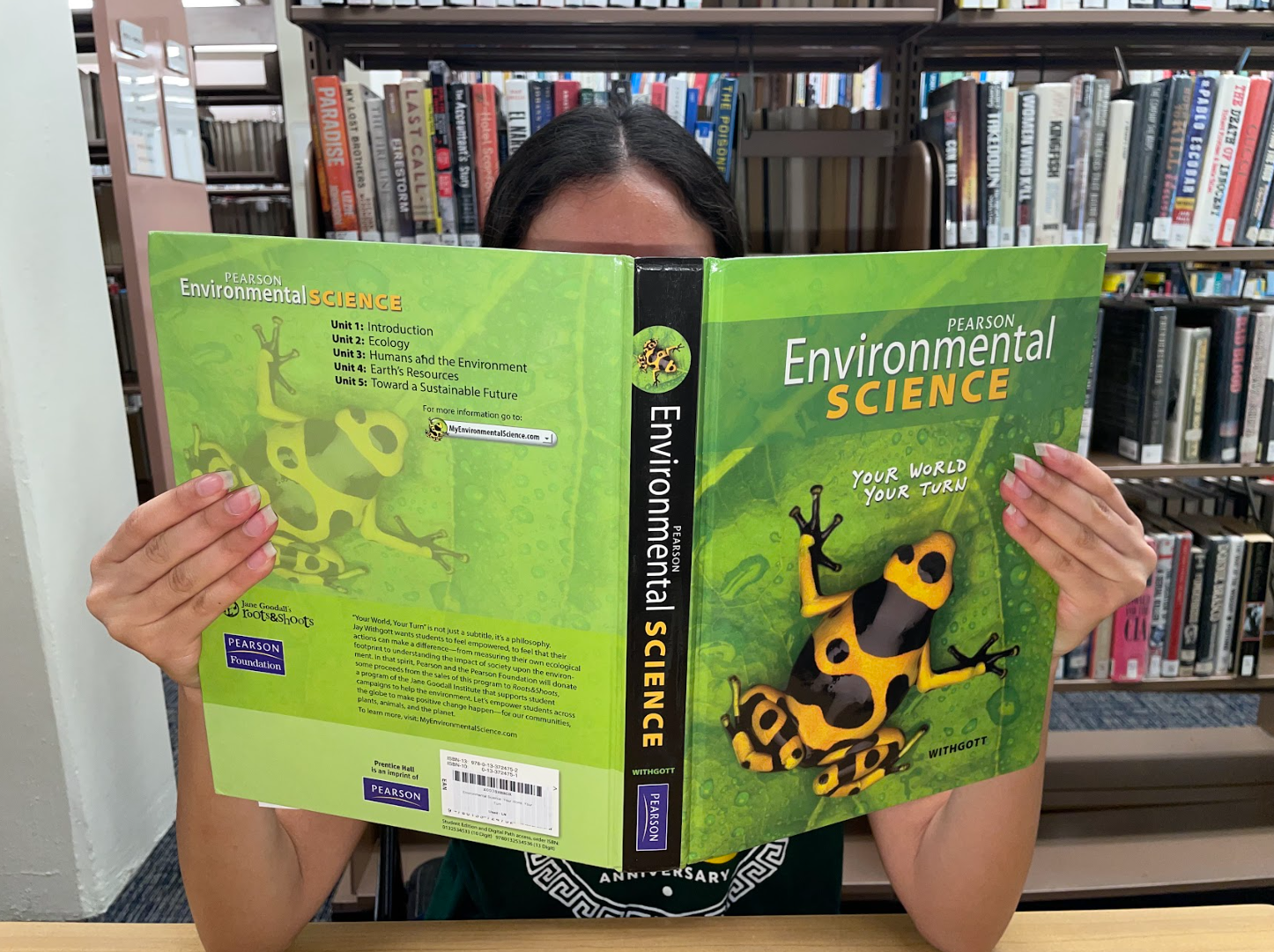Clarissa Wing is a 2023 JCal reporter from San Mateo County.
A partnership between AAJA and / CalMatters

A partnership between AAJA and / CalMatters

JCal is a partnership between AAJA and CalMatters
2023 Program
Water and Drought
The beginning of 2023 started with heavy rainfall in the Bay Area and Notre Dame Belmont High School’s basement flooded. […]
July 29, 2023

(Clarissa Wing poses with an environmental science textbook at San Bruno Public Library. Photo taken by Julianna Wing)
The beginning of 2023 started with heavy rainfall in the Bay Area and Notre Dame Belmont High School’s basement flooded.
Ava Marinos was a senior at the high school and was confused by the thought of being in a drought, despite witnessing the wreckage caused by the flood.
“It definitely needs to be covered a lot more than it is because I haven’t even learned about it within my high school career,” she says, “which is alarming because it’s such a huge issue in California.”
Marinos finds it difficult to address the drought when she has minimal knowledge on the topic. Surprisingly, California high school science teachers aren’t required to teach about flooding and droughts.
Angie Santellan, a high school freshman, explains how she hasn’t received much instruction on the drought.
She adds, “I haven’t really learned much about water, maybe a little bit in history and what has happened, but not a lot.”
For Santellan, her knowledge on droughts from middle to high school won’t change much, unless she takes an elective environmental science class or learns about it on her own time.
As a chemistry and forensic science teacher from Notre Dame Belmont High School, Isabelle Haithcox says miseducation on the drought is rampant and a way to solve it is by making drought education a part of the school curriculum at every grade level.
“One common misconception I’m seeing this year is, ‘Oh, we had a wonderful water year. So we’re out of the drought, we’re fine.’ And unfortunately, that can turn around so very quickly,” Haithcox says. “We still need to be very careful with our water usage.”
She says that flooding is a temporary fix, but not the long term solution.
“They could be starting to read about water issues and droughts or resources in history. They could be talking about the history that lead to environmental issues we’re currently facing,” she says. “So there’s lots of ways this could be addressed in the curriculum without having to be only in the science curriculum.”
Diane Papan, a California assemblymember and Democrat representing regions in the Bay Area, explains that cost can act as a barrier to adding drought education to school curriculum.
“Every time you add a curriculum, it’s going to cost money because teachers have to get up to speed to teach the curriculum,” Papan says. She recommends that supplementing drought education into existing coursework will be the most cost-efficient model. However, she is hesitant in the implementation of such curriculum.
As a product of the education system, 18-year-old Marinos feels there is much more to be done and emphasizes, “If there’s a certain science topic everyone needs to learn about it needs to be droughts and like water issues… In order to fix it, we need to be educated on it.”
Marinos, Santellan, and Haithcox suggest that to create a generation that desires to promote positive change for the environment, it begins with proper education in California’s classrooms.
Clarissa Wing is a 2023 JCal reporter from San Mateo County.




JCal is a free program that immerses California high school students into the state’s news ecosystem. It is a collaboration between the Asian American Journalists Association and CalMatters.
Contact us at michael@calmatters.org or support@aaja.org.
Subscribe to aaja’s newsletter